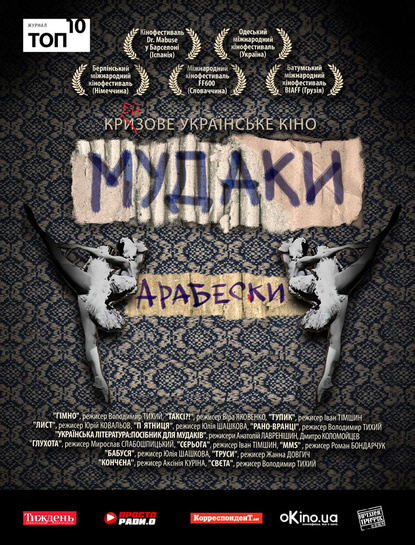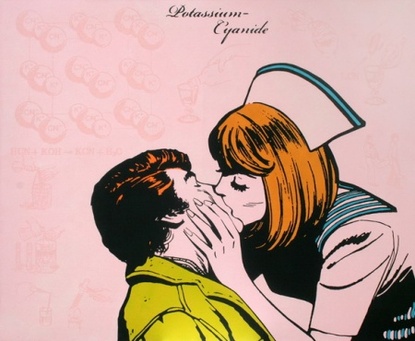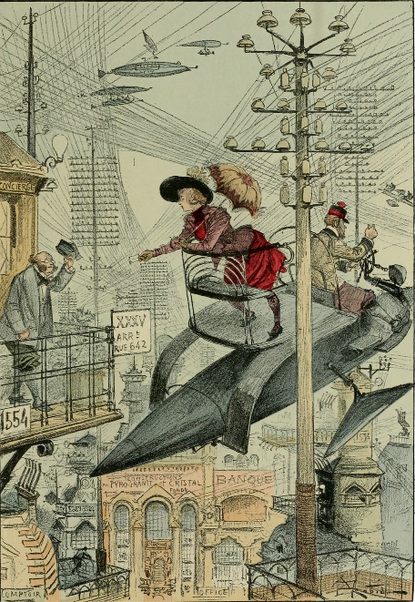Nataliia Zabolotna: “Our aim – a cutting edge museum centre”
Since mid-March significant changes have been taking place at the Art Arsenal. Nataliia Zabolotna was appointed CEO of the centre after having served 6 years as director of Ukrainian House. The Arsenal is virtually the largest exhibition centre in Europe, as well as one of Ukraine’s most ambitious construction projects. It’s a huge task and sizeable test for its new director. Nataliia Zabolotna speaks to the chief editor of Art Ukraine, Alice Lozhkin, about dealing with the workload and her visionary plans for transforming the Arsenal into the most powerful centre of artistic life in Ukraine.
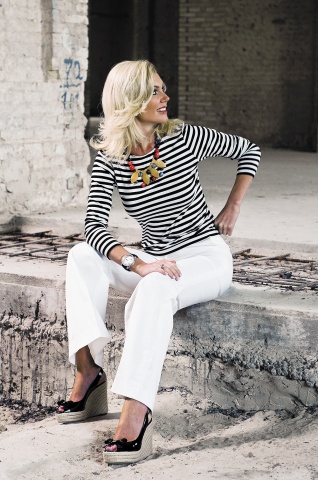
- You were director of Ukrainian House for a long time. Is it difficult to adapt to a new work environment?
- It’s true, I worked at Ukrainian House for a long time, and during that period it became a home in a literal sense. Recent years became more stressful, because we were constantly working with a variety of initiatives, usually artistic. We were the first - and are currently the only - initiators of art fairs in Ukraine, which became known as ‘Art Kyiv’. We then began to regularly hold the Antique and Sculpture Salons. Realising that contemporary and more traditional forms of art require separate treatment, we divided Art Kyiv into two separate, large events – a contemporary art fair called Art Kyiv Contemporary, and Fine Art Ukraine. That was therefore a good start, and I hope that the Arsenal will develop an even more active life.
- It seems you’d already collaborated with the Arsenal on joint projects…
- I like to joke that the Arsenal has been shadowing me like a ghost, even since last summer. They entrusted the symbolic opening of the Arsenal with me. It was Viktor Yuschenko’s initiative, the former President of Ukraine, and timed to take place on Independence Day. In the De Profundis exhibition we tried to investigate the evolution of our local sculpture – from its archaic origins until today. The project wasn’t easy to realise, and so overall I’m pleased with it. After all, we were fortunate to be able to acquaint visitors with brilliant examples of our local art – from my beloved Scythian ‘baby’ and the work of Johan Pinsel, to Archipenko’s avant-garde and all the Pleiades of the modern masters, whose work I truly and absolutely love.
However I simply don’t have the time for some deeper reflection about the way, for better or worse, changes transform our lives. The Arsenal is a huge complex, a huge building, and our aim is a cutting edge museum centre.
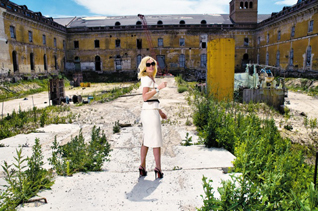
- Until recently a common opinion had been forming that the Arsenal would develop into something like a Ukrainian Louvre. The concept sounds very attractive, but it’s difficult to understand how we should interpret it.
- Well, the idea about a Ukrainian Louvre does sound really nice, but, in fact, in today’s context it’s rather utopian. Large scale institutions like the Louvre, or for example, St Petersburg’s Hermitage, are products of a completely different era, and they didn’t become filled in a day, or even in one century.
At the moment the Arsenal doesn’t have a large collection, and it just seems inhumane to fill the space with the cream of regional museums. Personally, I don’t see the future Arsenal as a museological expropriator, but as a mobile contemporary art institution which deeply honours the past, but looks towards the future. To this end we’re planning to begin a whole series of projects.
A large part of the future Arsenal is a historical retrospective. However, we want to move away from the archaic museum standards of the 19th century, which, unfortunately, are still quite common in our country. Our historical exposition needs to be contemporary, and now we, with members of my museum curator group, are learning the experience of leading museums around the world. We want to understand how to interest younger people in our history, as well as a wide strata of the population. I believe that it’s completely realistic to do, because in the modern world the language you speak with the viewer is really important. We want to speak a contemporary language with our audience.
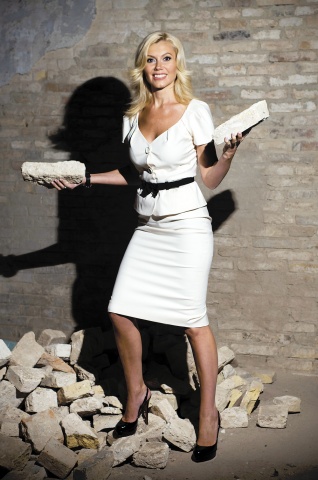
- But, as far as I understand, the Art Arsenal doesn’t only have a historical orientation. A large part of the centre will be dedicated towards a range of contemporary art projects. What is the concept driving this direction?
- The Art Arsenal is to become one of the biggest museum and exhibition centres in Europe. We are focusing on the European experience, which requires us not only to build exhibition halls, but a true ‘centre’ where there’s a dedicated place for an electronic library, a media centre, book shops, lectures and a recreation space.
One of the most important activities of the Arsenal must be contemporary art. But this means that we need to create our own collection of contemporary art, support domestic and international exhibition projects, present works from leading art centres around the world and so on. We’re only starting to move in this direction but I’m sure that it will eventuate, because the Art Arsenal is a truly unique space and it has to be a catalysing process, so that it’s not only a centre of cultural life in the capital, but also in the regions.

- And who is supporting you to implement your initiatives?
- The team is one of the main keys to the successful implementation of all the Arsenal’s commencing initiatives. I understand perfectly that it’s absolutely unrealistic to cope with a task such as this alone. I’m therefore surrounding myself with highly-qualified managers and curators, people whom I trust in terms of professional competence. At the moment, as a part of the artistic project’s conception, the conceptual elaboration and development of the contemporary art focus is firstly being supported by Oleksander Soloviov, who has become my deputy with cultural and exhibition activities. Dmytro Omelyanovych Horbachov is also assisting in terms of respected contemporary Ukrainian art historians and experts in the avant-garde.
Oleksander Soloviov is one of the leading local specialists in contemporary art and one the most competent Ukrainian curators. At the moment he is also inviting the participation of the most active curators, art experts and managers, and I think that with a team like this we’ll already soon be working together effectively and implementing projects which have long been deserving of the Arsenal - colourful events of national and international scale.

- You’re a very energetic woman - it’s immediately noticeable, but still, how do you think you’ll cope with this workload? Do you have any time left for yourself, or family?
- For the time being it’s definitely not easy. I have two young children whom I love very much and try to give my full attention to.
For me work is a battery. To work with art, especially on projects like the Arsenal, is a great honour and pleasure. It’s not every day that we have the opportunity to build a museum. Therefore today it’s an issue in my life, and I want to do everything to the highest possible quality – the architecture, the exhibitions – so that later we won’t need to be troubled by ensuing problems.
I really want to promote the Arsenal’s cause so that people will start to come to us, so that we can stage large-scale projects. There’s enough here to keep us optimistic. Additionally, I have to travel a lot, and the post stimulates conversation with interesting and necessary people. I previously often visited the world’s leading museums as a tourist, just to look at an exhibition, and I regret that I didn’t pay enough attention to important issues like, for example, communications layouts, water-proofing, the floor quality, the climate control system and so on.
Now all of these things are of the upmost interesting to me. In general I try not to miss any significant international artistic events – fairs, biennales etc. For example, I just returned from the largest art fair in the world, Art Basel, which I regularly attend. I really want to incorporate this spirit of a globally famous fair in the running of our Art Kyiv. This kind of travel is very useful - when you visit a Rothschild dinner party or get an invitation to Simon de Pury’s wedding. This might sound strange, but everything in the world is decided through friendship and personal communication, even more than money.
We need to integrate into the international art elite and promote our local art on the international art stage. This will be one of the purposes of the Art Arsenal, and we have some interesting advisers. We’re already receiving propositions from all around the world. Museum directors want to meet and we tell them about the Arsenal. The precedent of building a contemporary museum in Ukraine is very interesting to the international community. Recently, for example, a leading Latin American curator, Victor Zamudio-Taylor, came to visit us. He’s the curator of the most ambitious Mexican collection of contemporary art. It belongs to Eugenio Lopez Alonso, a young businessman and collector. We discussed the involvement of Latin American guests in the next Art Kyiv… So in my opinion, a key institution like the Art Arsenal needs to behave like this: integrate into the global art community whilst maintaining a focus on its own, national art.

